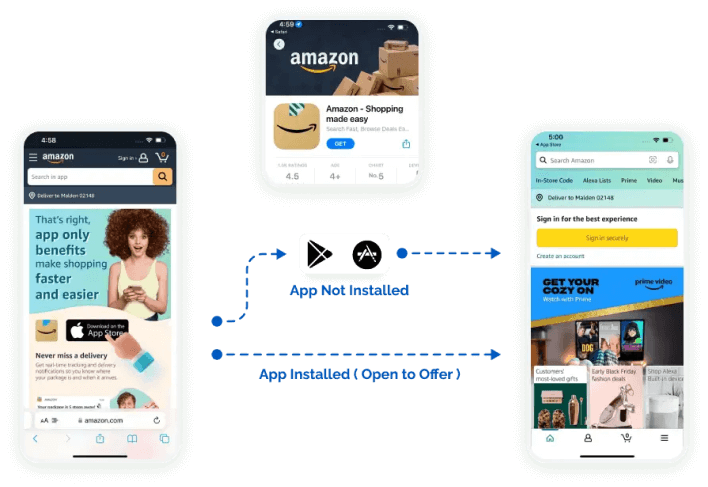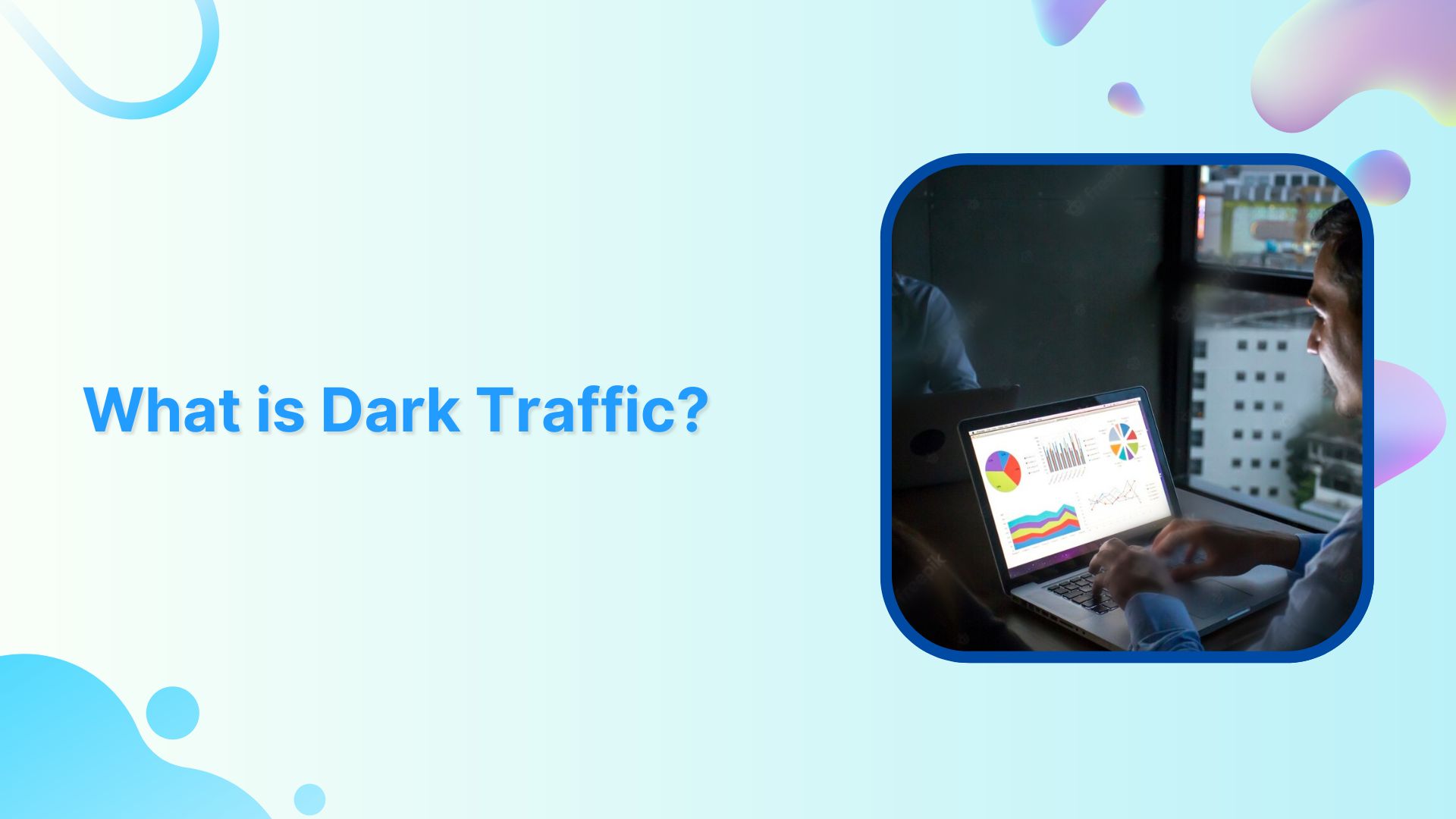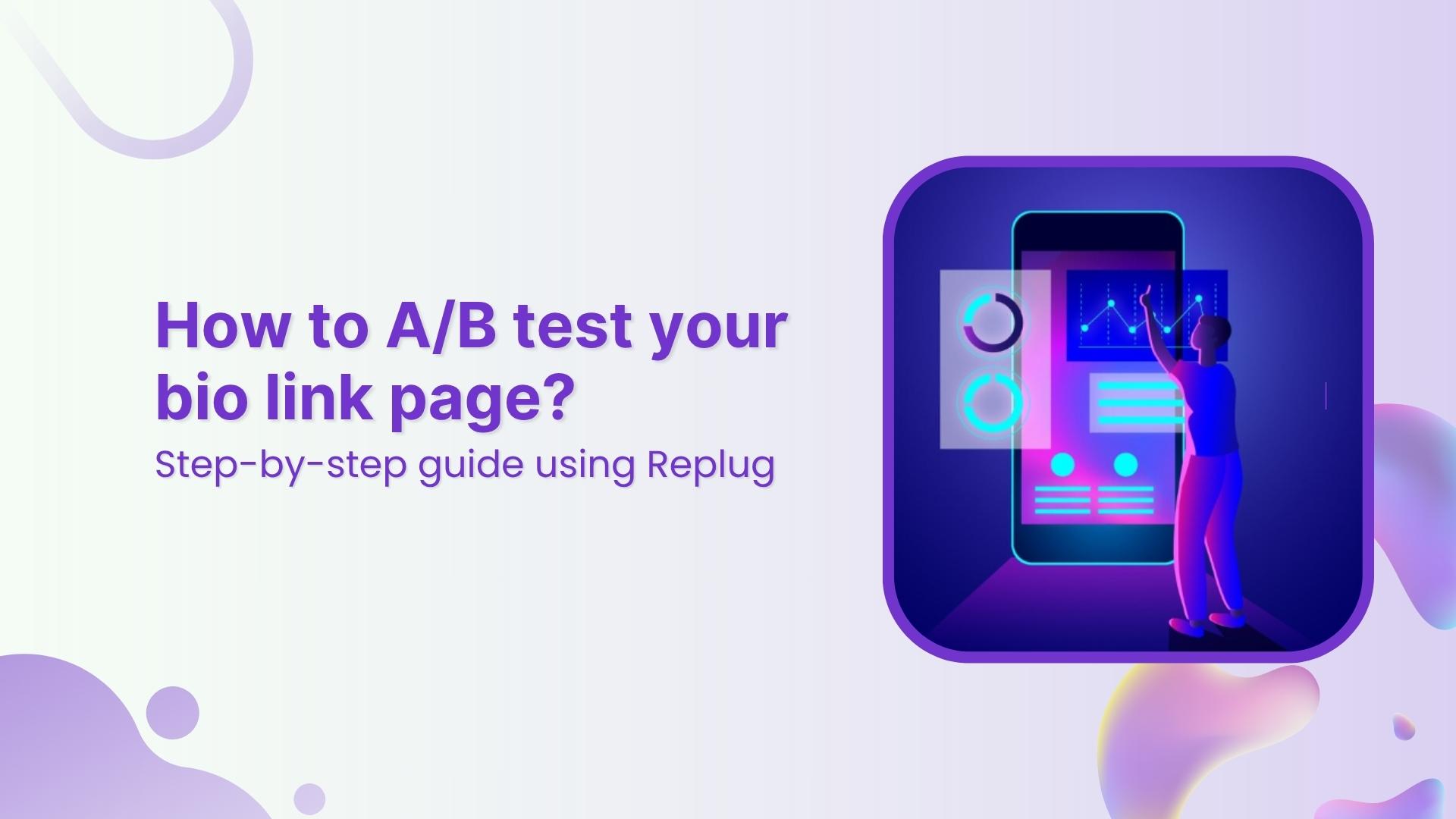Picture this: you have a website, and you want to know where your visitors are coming from to improve your strategies. But there’s a tricky kind of traffic called “dark traffic.” It’s like visitors arriving in disguise – you can’t tell where they’re really from. This is a problem because you can’t figure out what’s working or not in your marketing.
Dark traffic happens because sometimes, visitors directly type in your website’s address or use bookmarks. Also, links shared in private messages or some apps can’t be tracked properly. So, even though they’re visiting your site, you don’t know where they’re coming from.
Solving this puzzle is essential. By understanding dark traffic better, you can make your marketing smarter and improve how you reach people.
Let’s dive into the world of dark traffic, learn why it’s a challenge, and find ways to uncover the hidden paths your visitors take to reach your website.
What is dark traffic?
Dark traffic refers to the website or app traffic that is attributed as “direct” traffic in analytics tools, but its true source or origin is not accurately tracked or identified. In other words, it’s traffic that comes to your website or app without clear referral information.
Dark traffic can make it difficult to understand the true sources of your traffic and the effectiveness of your marketing efforts.
What are the causes of dark traffic?
There are several reasons why dark traffic may occur, including:
Direct bookmarks:
Users manually typing in your website’s URL or using a bookmarked link.
Untracked links:
Links shared through private messaging apps or email that are not properly tagged with tracking parameters.
Mobile apps:
Traffic from mobile apps might not pass referral information correctly.
HTTPS to HTTP redirects:
If a user clicks a link on an HTTPS site that redirects to an HTTP site, referral information can be lost.
Social media apps:
Links clicked within social media apps might not always be accurately tracked.
Use deep links for seamless navigation
Trigger more clicks, conversions & app installations with fully customizable deep links.
Learn More!
How to resolve the dark traffic problem?
To deal with dark traffic, consider the following steps:
Implement UTM parameters:
Use UTM parameters in your links whenever you share them online. UTM parameters are tags added to the end of URLs that help track the source, medium, campaign, and other relevant information about the link. This can help you better categorize your traffic and attribute it accurately.
Use analytics tools:
Utilize web analytics tools like Google Analytics or Usermaven to track and analyze your website’s traffic. While these tools may not completely eliminate dark traffic, they can provide insights into trends and patterns that might help you identify sources of direct traffic that should be categorized differently.
Monitor referral sources:
Regularly check your analytics data to identify unexpected spikes in direct traffic. Investigate the source of these spikes to determine if they are the result of dark traffic or if there might be new referral sources that are not being properly tracked.
Educate team members:
Ensure that everyone who shares links on behalf of your organization is aware of the importance of using properly tagged links with UTM parameters.
Improve tagging:
If you’re using social media or other platforms to share links, ensure that these platforms are correctly handling referral information. Some platforms might strip out referral parameters, leading to inaccurate tracking.
Monitor trends:
Keep an eye on traffic patterns and trends. If you notice a consistent pattern of dark traffic from a specific source, it might be worth investigating and finding ways to properly attribute that traffic.
Regularly review and clean data:
Periodically review your analytics data to identify and clean up any discrepancies or misattributions.
While it’s challenging to completely eliminate dark traffic, taking these steps can help you minimize its impact and gain a clearer understanding of your website’s true traffic sources.
Also read: Ultimate Guide: Create Tracking Links for Success
Dark traffic scenario
Imagine you’re the owner of a thriving online fashion store, and your website is bustling with activity. You’re excited about the traffic flooding in, but there’s a twist. A significant portion of your website’s visitors fall under the mysterious realm of “dark traffic.”
You log into your analytics dashboard and notice that a substantial chunk of your traffic is labeled as “direct traffic.” This is the category that includes visitors who type in your website’s URL or use bookmarks to access your site. While this is expected to some extent, you suspect that not all direct traffic is as it seems.
You’re aware that social media shares and private messages could be contributing to this direct traffic, but without proper tracking, you can’t pinpoint the exact sources. This puts a wrench in your efforts to measure the effectiveness of your marketing campaigns accurately.
You know that understanding your traffic sources is crucial for making informed decisions. You want to know which campaigns are driving the most visitors and which platforms are performing best. Without proper attribution, your marketing strategies could miss the mark.
Also read: How do UTM Parameters Work: A Complete Guide
Solution: Unmasking the shadows
Armed with the knowledge that dark traffic can skew your insights, you decide to take action:
- UTM parameters: You start incorporating UTM parameters into your links whenever you share content. These magic tags allow you to tell Google exactly where the visitors are coming from. Now, whether it’s a link shared on Twitter, in a WhatsApp message, or through email, you’re covered.
- Segmentation: You dive into your Google Analytics dashboard and create a segment specifically for direct traffic. This allows you to isolate the dark traffic and understand its impact better.
- Page analysis: Navigating to the “All Pages” section, you look for anomalies. Certain pages seem to have unusually high direct traffic. You cross-reference these with your marketing campaigns and recent shares.
- Education: You make sure your team is well-versed in using UTM parameters. You emphasize the importance of tagging links correctly to avoid the shadowy realm of dark traffic.
- Refinement: Armed with insights from UTM-tagged links, you refine your marketing strategies. You identify which platforms are truly driving traffic and adjust your efforts accordingly.
- Continual monitoring: You understand that dark traffic isn’t entirely escapable, but you commit to regular monitoring and adjustments to keep it at bay.
By unveiling the sources of your dark traffic, you’re not only improving your data accuracy but also making more informed decisions about your marketing efforts. The hidden paths are no longer a mystery – you’re shedding light on the shadows and navigating your website’s success with clarity.
Create compelling Call-to-Actions to boost conversions
Improve your click through rate by creating catchy CTAs for your marketing campaigns.
Get Started For Free!
FAQs
Why is dark traffic a challenge?
Dark traffic makes it difficult to understand the true sources of your website’s traffic and the effectiveness of your marketing efforts. Without proper attribution, you might misinterpret the impact of your campaigns.
How does dark traffic happen?
Dark traffic can occur when users manually type in URLs, use bookmarked links or click on links shared through private messages or certain apps. Referral information can be lost in these cases.
What are UTM parameters?
UTM parameters are tags added to the end of URLs to track the source, medium, campaign, and other information about a link. They help in accurately attributing traffic to specific sources.
How can UTM parameters help with dark traffic?
UTM parameters provide a way to tag links shared on different platforms, ensuring that even if the traffic appears as direct, you know its true origin.
What are some common sources of dark traffic?
Direct bookmarks, links shared in private messages, traffic from certain mobile apps, and links clicked within social media apps can contribute to dark traffic.
How can I prevent dark traffic?
To minimize dark traffic, use UTM parameters consistently, educate your team on their importance, and monitor referral sources regularly to identify anomalies.
Can I completely eliminate dark traffic?
It’s challenging to eliminate dark traffic entirely since some direct traffic is legitimate. However, you can take steps to reduce its impact and improve tracking accuracy.
How do I analyze dark traffic in Google Analytics?
Use segmentation to isolate direct traffic. Analyze specific pages that might have unusually high direct traffic. Look for patterns and trends that can indicate the origin of this traffic.

































